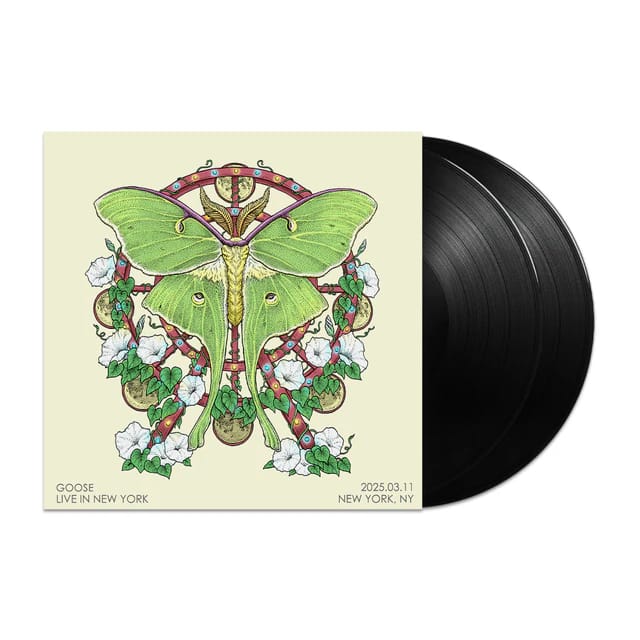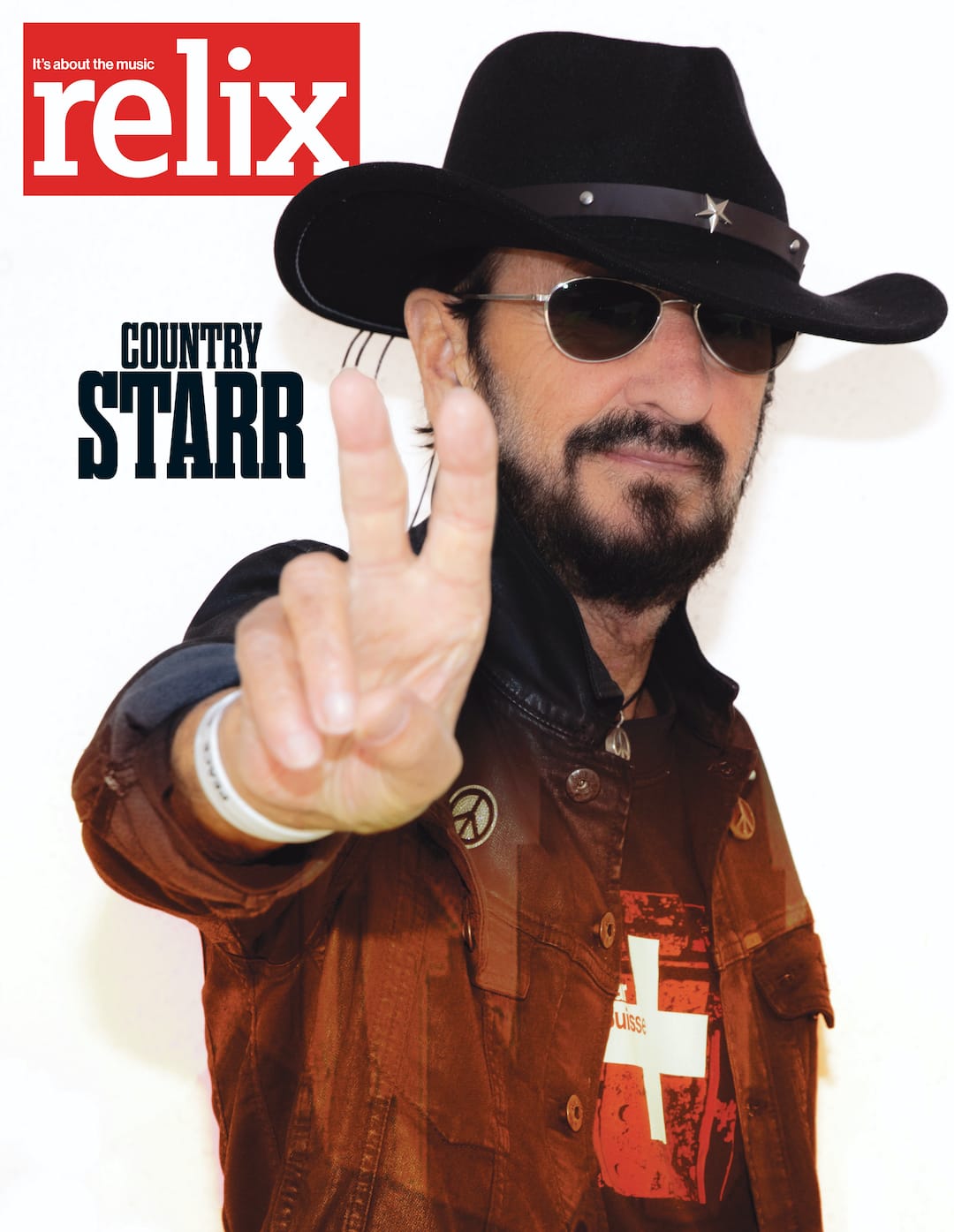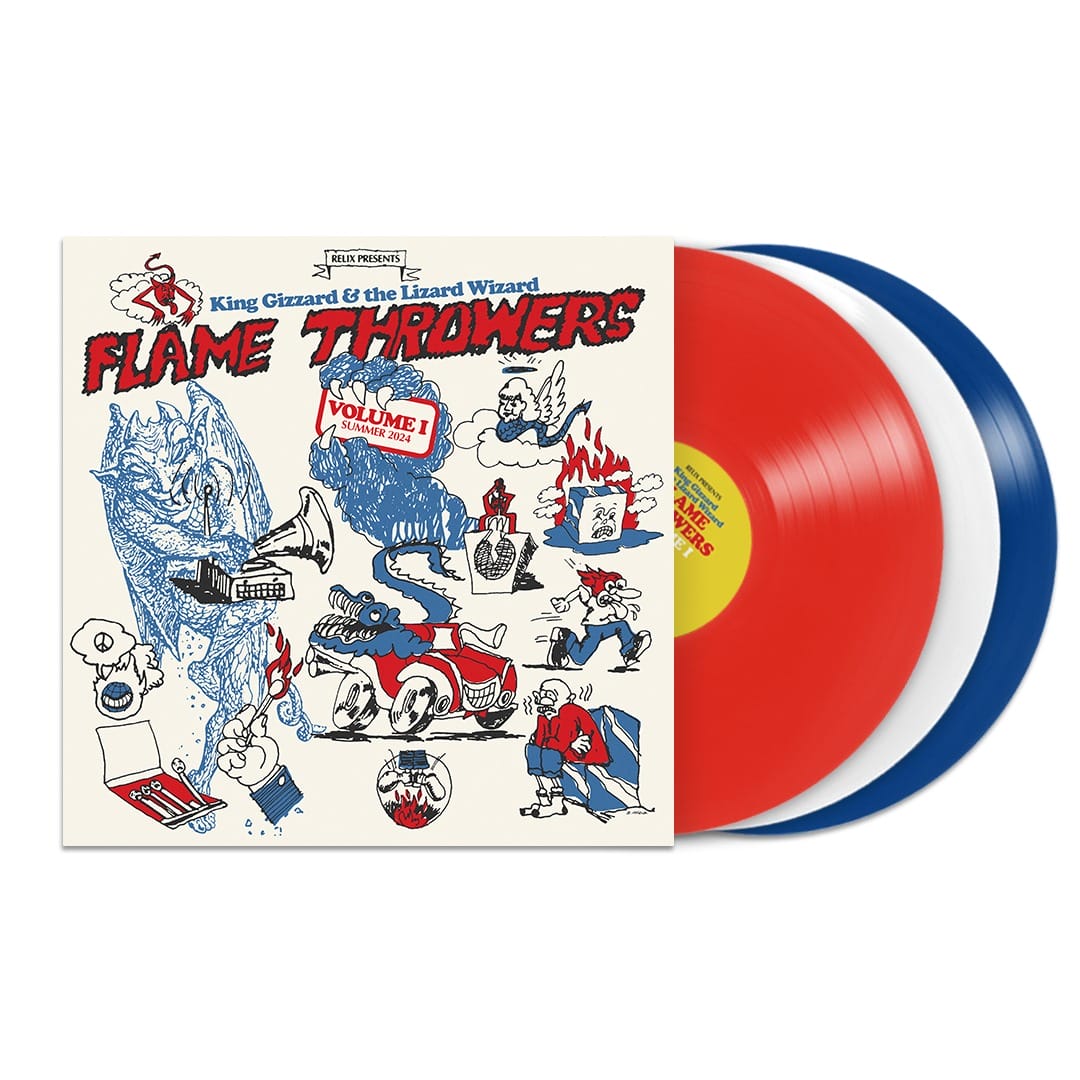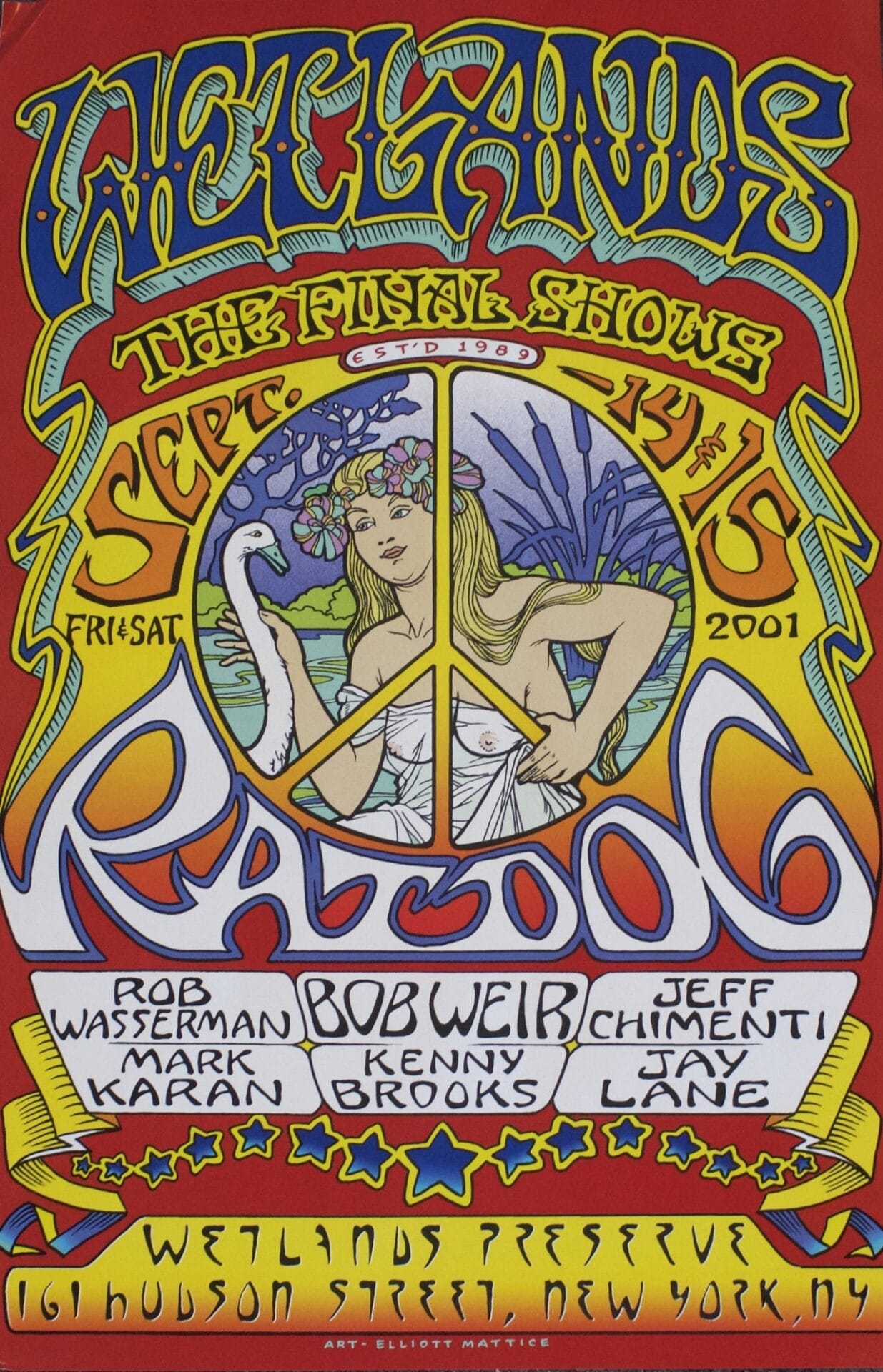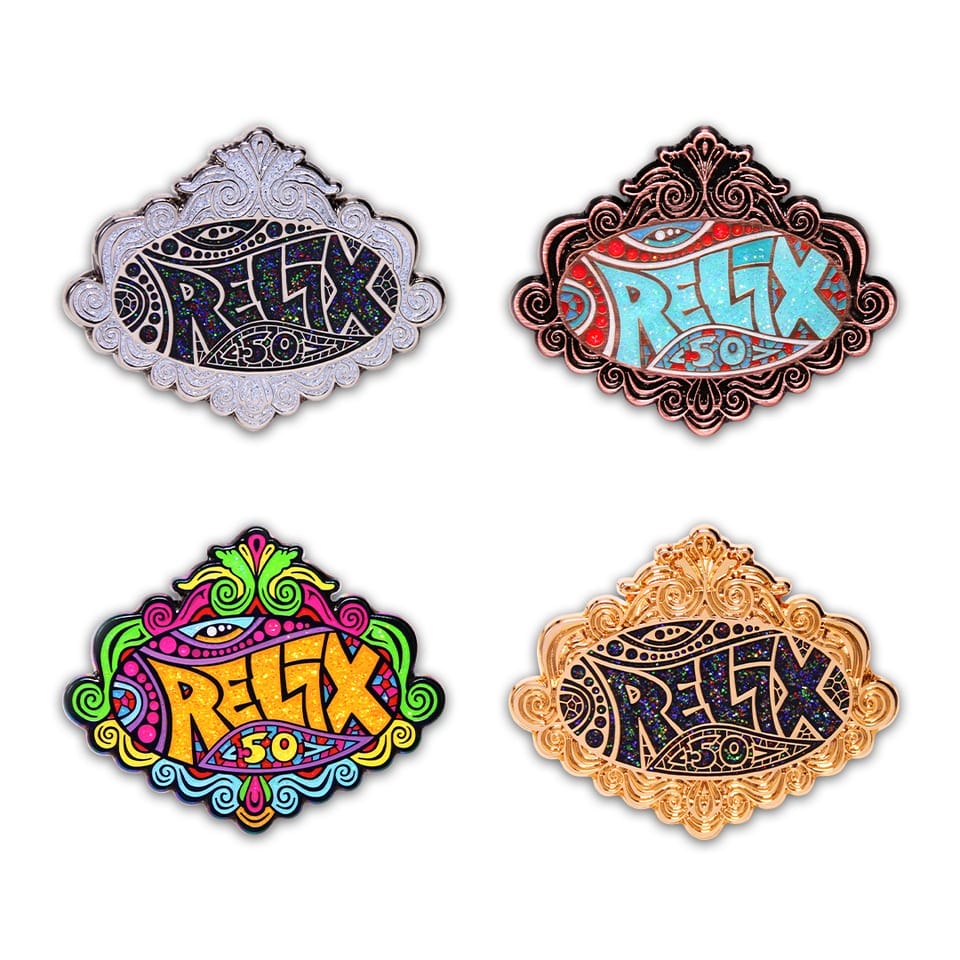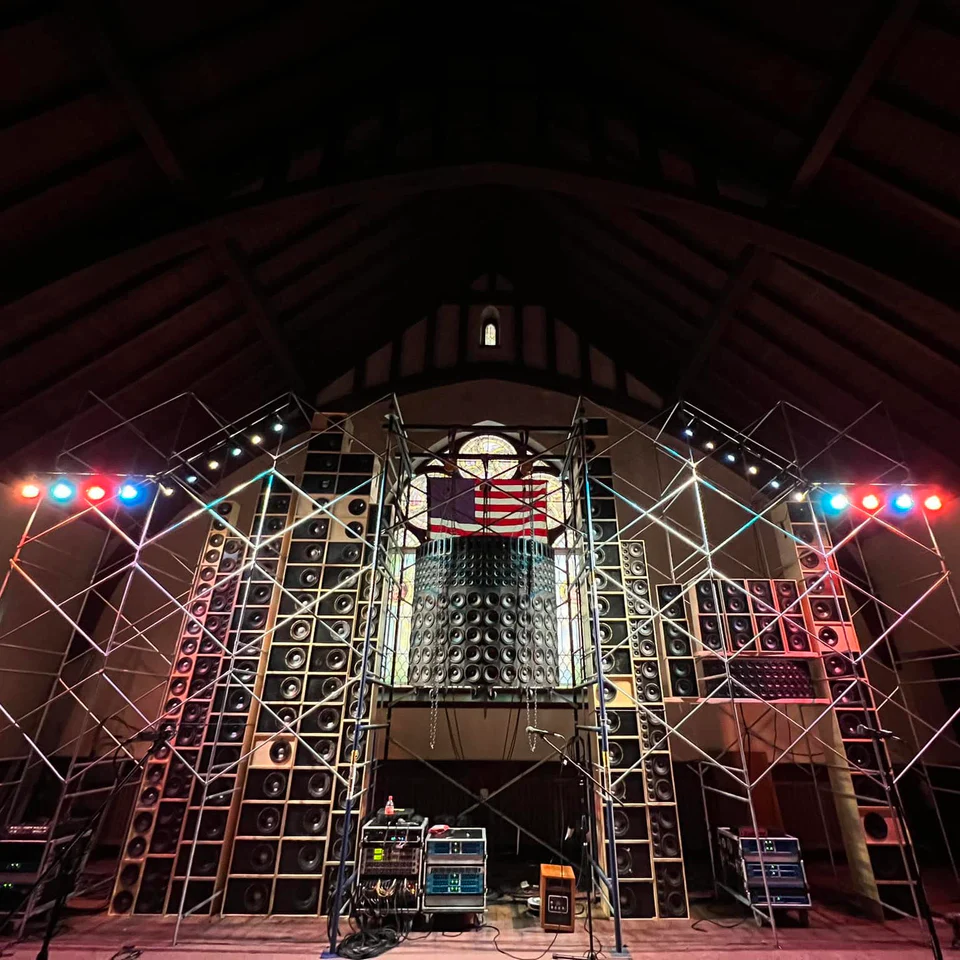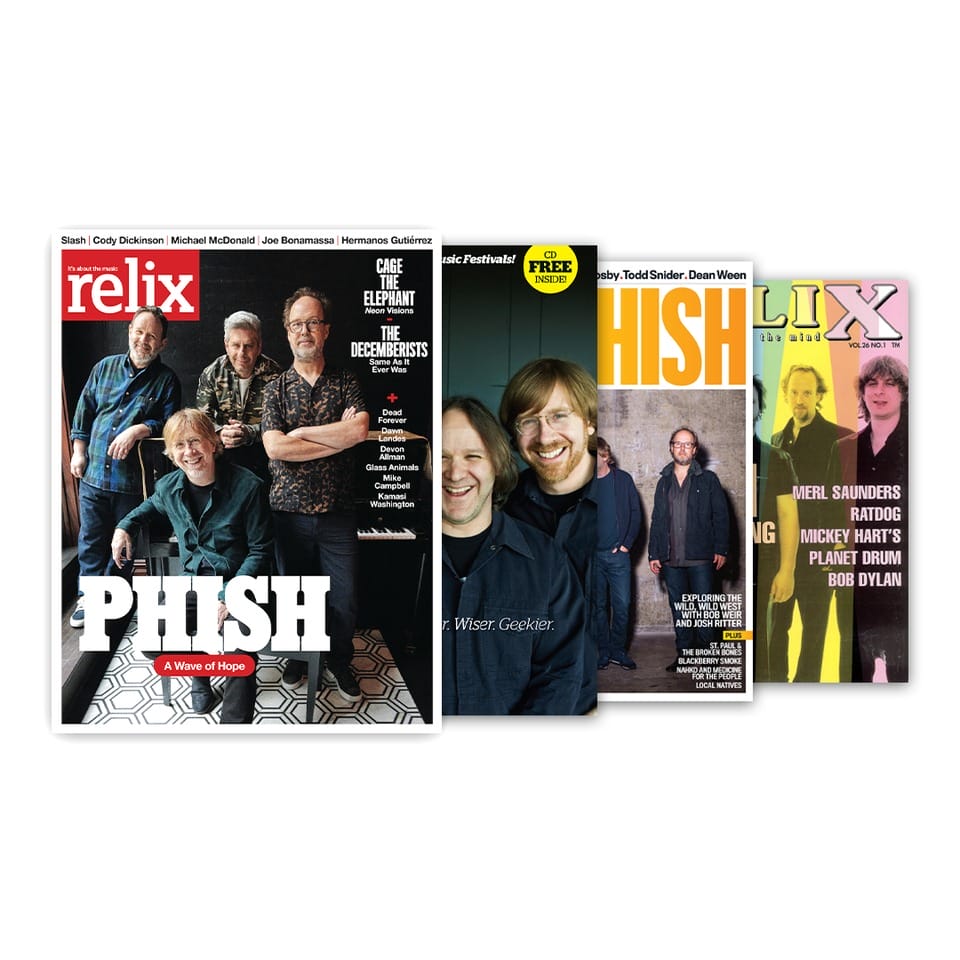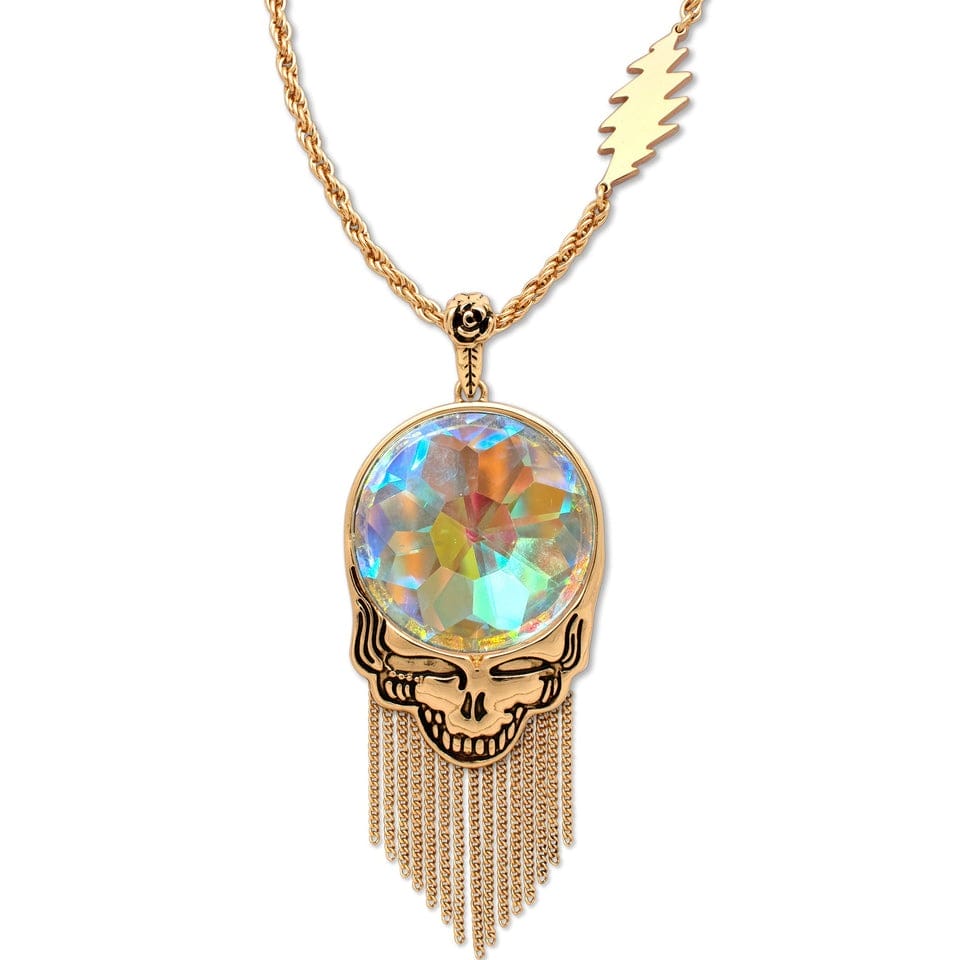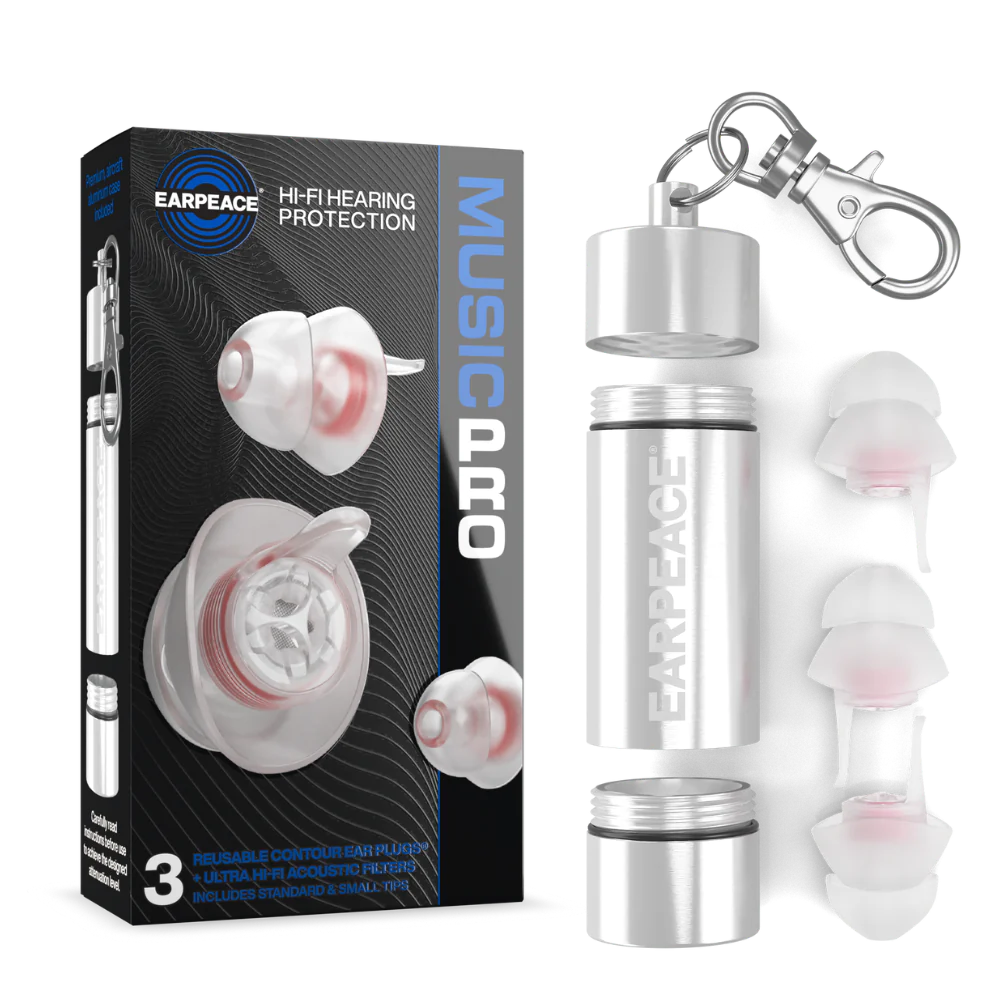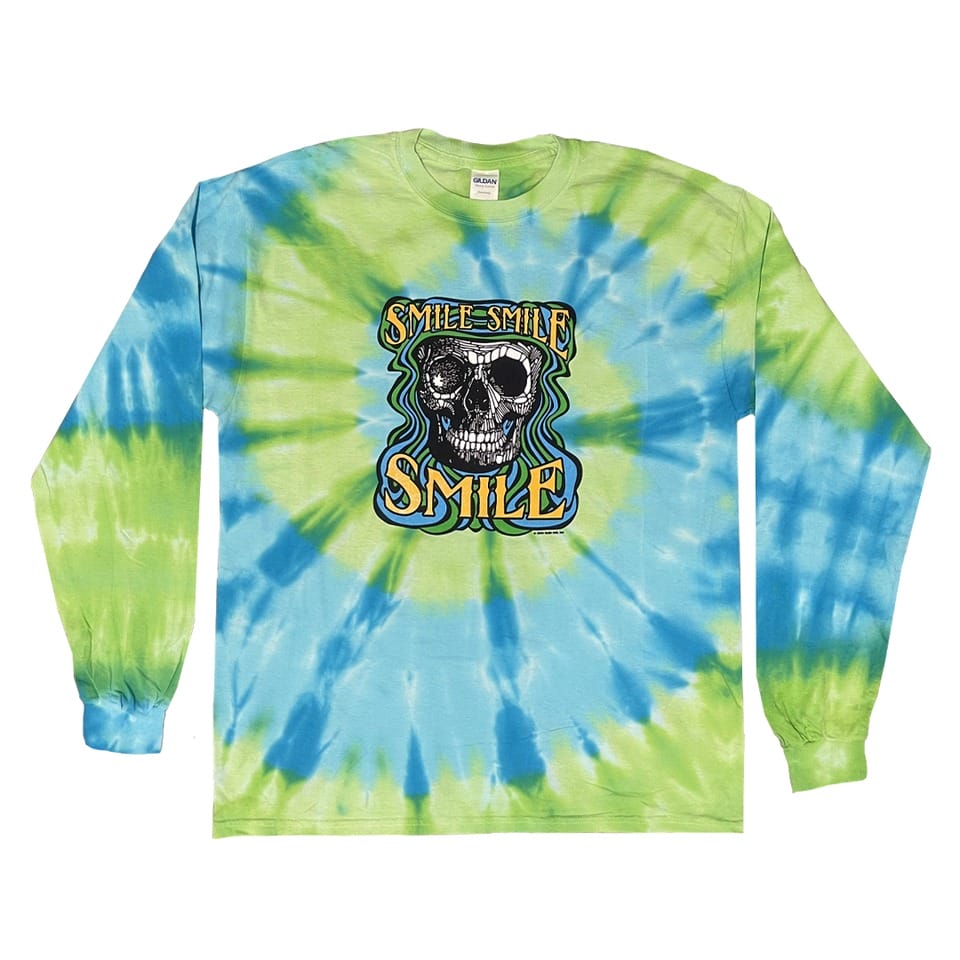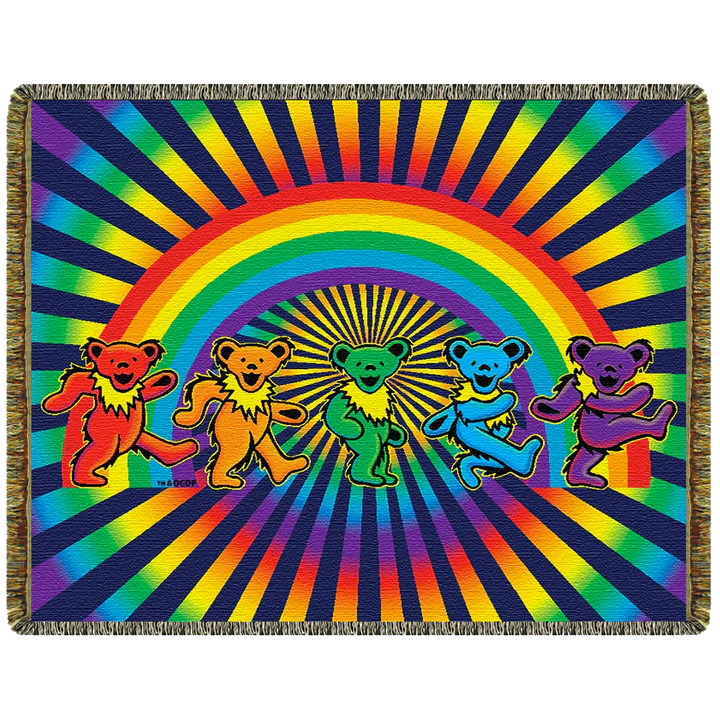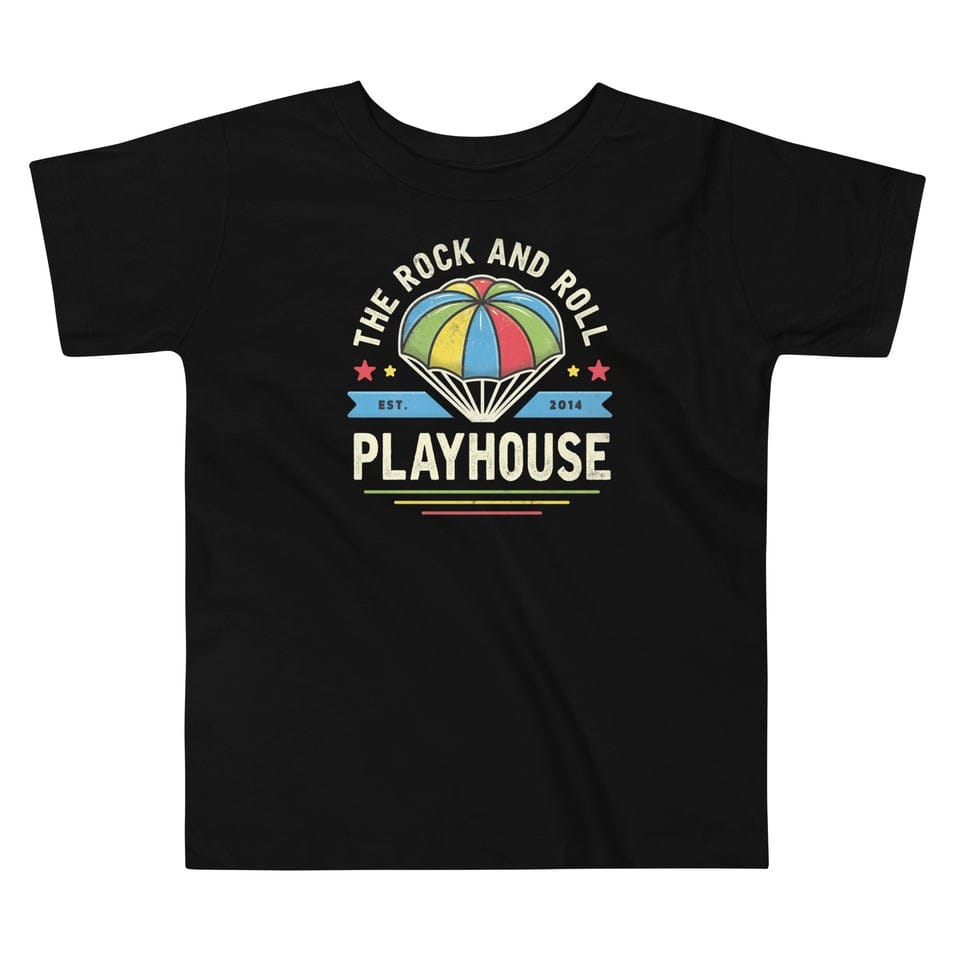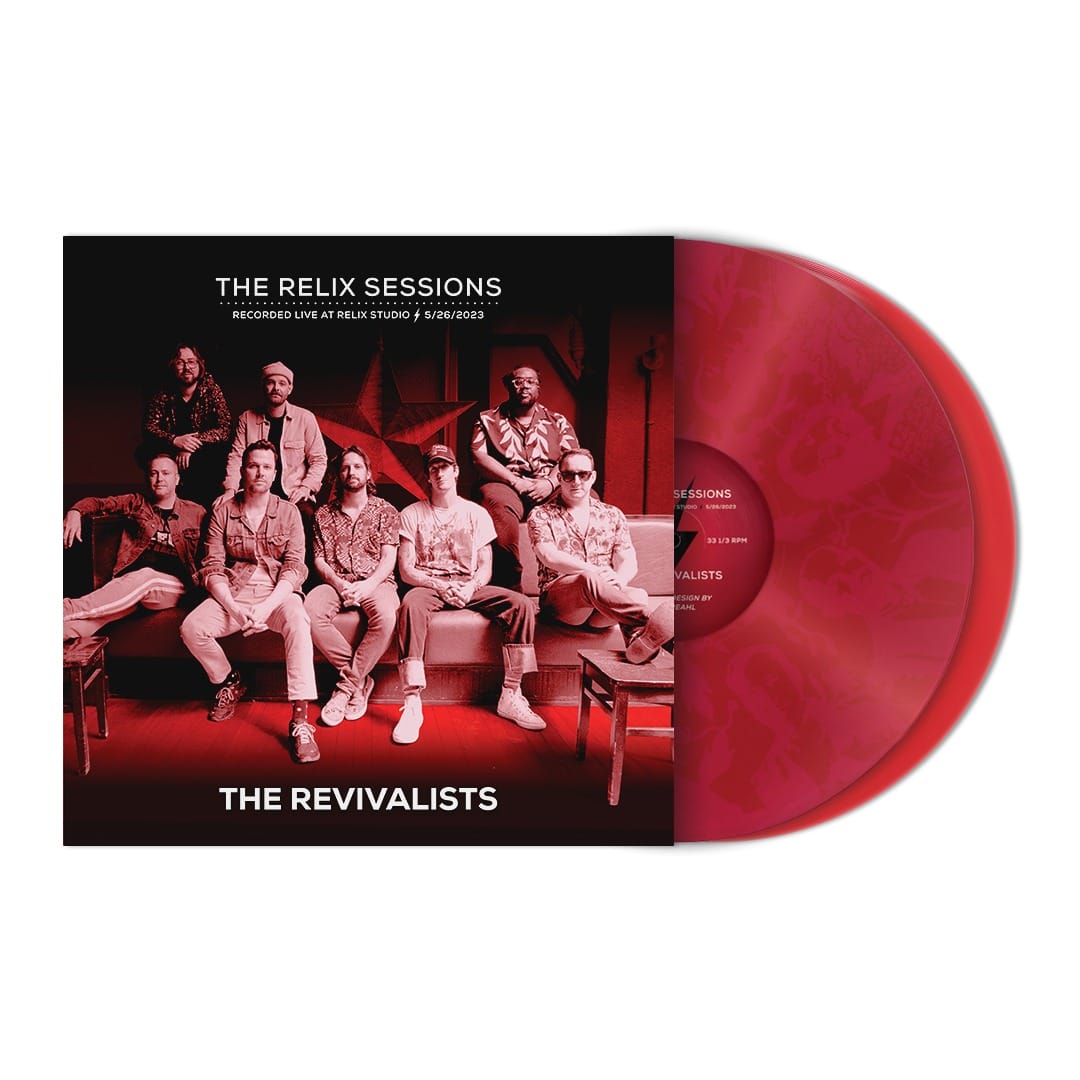New Life for the Dead
With Furthur’s summer tour set to kick off on Friday night in Rochester, we thought this a fine time to look back to July 2003, when Phil Lesh and Bob Weir reunited in the Dead
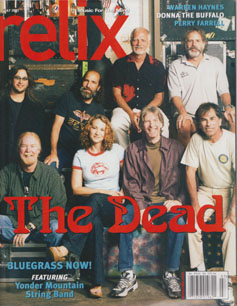
“The magic’s back big time! I can feel it, baby!” Mickey Hart is cruising through southern Sonoma County on his way down to the Dead’s office/studio complex in Novato, Martin County, California. And though I’m on the other end of the phone, I just know he’s wearing a space-age headset, he’s got the dark shades on, he’s moving animatedly, and he’s got a big ol’ grin on his face. When Mickey is “on” in interview mode, he’s a writer’s dream – his enthusiasm is infectious and he’s a veritable quote machine. On this glorious May afternoon, he’s more than happy to do his part to hype the forthcoming summer tour of the Dead: “The vibe is there!” he shouts above the roar of his engine. I neglect to ask him what he’s driving, but I’ve seen his cars before – whatever it is, it’s sleek and speedy, with a lot of horses under the hood. “We’re forging a new hybrid – very much Grateful Dead. It sounds and feels like Grateful Dead, but obviously without Jerry. Y’know, I keep hearing him in my ear and he’s saying, ‘Yeah! Go! Go! Go! Yeah! Yeah! Yeah!’ And, ‘If you don’t do it, you’re lame.’” Then Mickey drops into a dead-on impersonation of the Departed One: “Don’t be lame, maaaan!” He laughs heartily and I can hear him accelerating, as if to punctuate the thought. “No, really,” he adds. “Jerry’s really loud and he’s riding shotgun with me. I’m tellin’ you, the love is back. That’s what the Grateful Dead was built on to begin with.”
Well, that’s a pretty rosy assessment of the state of things in Grateful Dead Land, but that’s Mickey – at that moment. He’s just doing his job, folks. But I also think he’s sincere. He’s genuinely jazzed to be back playing music again with his former mates from the Grateful Dead – now, in reconstituted form, known simply as The Dead. Jazzed, and from the sound of it, still amazed that the bitter acrimony that had divided the band for years subsided to the point where they could all play music together again.
“After what we’ve been through…” he says, and his voice trails off. “If you were to say a year ago that we would get back together and play vital new music, I’d say ‘You’re outta your fucking mind! It won’t happen!’ But it did happen and now we’re running the show. We’re not being led around by a bunch of business advisors and lawyers. We’re taking our fate in our own hands and we’re all making the decisions. And we’re not estranged from each other. We’re siblings. We agree on some things and some things we don’t agree on. But that’s life. At least now the spirit allows for disagreement without anger. We’re in this together and moving forward.”
There’s a slightly defensive air to Hart’s remarks, but that may be because I’ve committed the cardinal sin of getting away from tour promo for a moment to ask about a shift in the power structure of the Dead organization and the common perception that Phil Lesh and his wife and manager Jill – estranged for a couple of years from Hart, Bob Weir and Bill Kreutzmann; indeed from the entire GD business infrastructure – are now effectively in control of the company and calling most of the shots.
“We all have equal input into it,” Hart is quick to note. “The way it’s set up now is we’re mutually agreeing on everything we do. We’ve put our differences behind us, as a matter of survival, and we’ve developed a new business model for a new day.”

In Another Time’s Forgotten Space
Consensus – everyone agreeing – was a basic tenet of the Grateful Dead’s operating philosophy when Garcia was alive. There are many stories of this or that plan – some worth big, big bucks – being derailed by a single “no” vote from a band member… and occasionally even a crew member. Generally speaking, though, the band accommodated each other’s whims and would go along (if grudgingly) with ideas or schemes that one or more of them were passionate about.
Without it ever being articulated, however, that modus operandi dissolved once Garcia died and the surviving members found themselves in charge of a huge operation, just recently moved into classy new digs in the Bel Marin Keys area of Novato, that no longer had its core business – Grateful Dead tours – to support it. And this became a principal wedge issue between Lesh and the other members of the group. Everyone at the top of the organization, from then-CEO Peter McQuaid to the musicians themselves, recognized that the company could not survive for many years without either restructuring at some point or obtaining a major infusion of capital from outside sources. Simply selling t-shirts and CDs wasn’t going to keep afloat a business that was top-heavy with well-paid workers of every stripe – from lawyers to roadies to recording engineers to secretaries. The Dead, to their eternal credit, were famous for their generosity and loyalty to their employees, many of whom were also their close friends.
In an effort to preserve and expand GDP, Peter McQuaid, with the backing of Weir, Hart and Kreutzmann, devoted a great deal of time and energy exploring different avenues for generating income for the company. The most controversial involved attracting venture capitalists, who would provide an immediate infusion of millions of dollars, allowing for the perpetuation of the status quo, but also to pay for the digitalization of all the music in their tape vault and improvements in the merchandising end of the operation. Phil Lesh, for one, did not approve of this development, at all. He (and others) feared that the Dead’s biggest asset – the vault – would be used as collateral in such a deal, leading to the possibility of the band losing control of their recorded legacy at some point; a price too high to pay. Though he objected as loudly and strongly as possible, Phil was out-voted by his colleagues (so much for the consensus; it had become democracy) and the machinations and negotiations continued. Disgusted, Phil withdrew completely from the day-to-day of the Dead organization, and, with Jill, set up his own independent operation to run the affairs of his band, Phil Lesh & Friends. In letters to the other band members, Phil mad it clear he had no interest in playing with them again, and so the era of complete estrangement began. Phil & Friends, Ratdog and Mickey’s various groups toured separately, and when The Other Ones regrouped in the summer of 2000, Phil was nowhere to be seen; he was replaced by Alphonso Johnson.
The Dead’s venture capital idea eventually fizzled, a victim of the dotcom bust and the associated belt-tightening, as did another ambitious revenue-generating venture spearheaded by Peter McQuaid: a project called Bandwagon, which would have had the Dead expanding their marketing operation – widely admired and even imitated by other groups – to take on other bands (names bandied about included Phish, Pearl Jam, Santana and even U2). Meanwhile, Weir and Lesh had toured together, each fronting his own band, with Bob occasionally sitting in with Phil Lesh & Friends. The thaw had begun, and by New Year’s 2001, the heartening rapprochement had led to Hart and Kreutzmann joining up with Lesh and Weir (and others) in a midnight set by the “Crusader Rabbit Stealth Band.” Most Deadheads were delighted to see the Core Four together again – “Unity is possible!” Phil declared from the stage at the end of the night – and it wasn’t long before rumors started to swirl that they might get together for some sort of tour in the summer of 2002. The removal of Peter McQuaid from his position in the fall of 2002 was another signal to Lesh that things had changed at GDP; McQuaid was replaced by the Dead’s long-time GD tour manager Cameron Sears.
Slowly but surely, Lesh returned to the fold, but this time he and Jill – his proxy in many business-related matters – had the power. After all, the money-making ideas that had driven him away had been discredited, and there could be no true “reunion” without Phil, so it was incumbent on the others to accommodate him as much as possible. When I asked Bob Weir if it was accurate to s ay that Phil returned on his own terms, he replied tersely, “Very much so.”
This turn of events was not universally embraced within the Dead organization, where there was a widespread concern that the ascension of the Leshes would eventually lead to wholesale changes in the structure of the company. However, those fears were put on hold last summer amid the euphoria that surrounded The Other Ones’ Alpine Valley shows (which grossed over $3.3 million) and the subsequent fall tour, which was tremendously successful financially, and was viewed by most Deadheads as an artistic triumph as well. Not surprisingly, you’ll find many nay-sayers on the latter issue; this is, after all, the fractious Grateful Dead scene. There are Phil & Friends partisans who were crushed that Phil has abandoned his adventurous solo band for what they see as a safer, ersatz Grateful Dead. For the record, Phil says he’s planning to tour with Phil & Friends in the fall. And among hard core Weirophiles, there were predictable complaints about Phil’s singing, and also about some of the freeform noodling that moved into The Other Ones’ music from Phil & Friends’ approach. (The Grateful Dead – pissing off a few cranks since 1965!)
Then, this past winter, as the always hyperactive Dead rumor mill buzzed with the prospect of a big summer 2003 tour by The Other Ones, two big events occurred. First came the announcement that henceforth The Other Ones would be called “The Dead.” The group played its first show under the new name at the Warfield Theater in San Francisco on Valentine’s Day, ably assisted by such guests as Joan Osborne, Sammy Hagar, Michael Kang and Warren Haynes. Even the cynics were knocked out by that show. Then came the long-expected streamlining of Grateful Dead Productions, with all but a small handful of employees laid off, and the Dead’s entire merchandising operation – one of the backbones of the company – completely “outsources” to Musictoday, a company, ironically, not unlike Peter McQuaid’s beloved Bandwagon.

What Shall We Say, Shall We Call It By A Name?
Phil Lesh readily acknowledges that he was the driving force behind junking The Other Ones moniker in favor of calling the group The Dead. “The feedback I get about the name change,” Phil tells me, “is that a lot of people are really excited about it and the general tenor of the responses is, ‘What took you guys so long?’ I’m personally excited about it because, even though it’s a compromise, it’s the perfect solution. It says, ‘This is who we are,’ and it still give the proper amount of respect to Jerry’s memory. That group will always be the Grateful Dead. This is something a little different, but still in that line.”
The move has outraged and offended some Deadheads, who view using even part of the old name as tantamount to sacrilege, and who see the switch as merely a clever commercial ploy – there’s little doubt that “The Dead,” with the resonance of nearly 40 years of history behind it, is a more salable commodity than “The Other Ones” could ever be. But let’s face it – they are The Dead. It’s their name to use, and judging by the seriousness with which they’ve been approaching their music since reuniting last year, they are honoring a noble tradition – even as it evolves before our eyes – not besmirching it. Bob Weir is the only one of the Core Four who has made any noises about the name change, but as Phil says with a laugh, “I guess Bobby forgot we had a meeting and he agreed on it.” Adds Mickey, “That’s just Bobby stirring things up. He’s a prankster. I was at the meeting where he agreed, too.”
The downsizing of GDP was no laughing matter, however. Again, the perception among some of those let go is that the move was instigated by the Leshes, but in fact the restructuring was ultimately endorsed by all four Grateful Dead members.
“This was not something we entered into lightly; far from it,” Phil Lesh says. “It was the most difficult thing I’ve ever had to do. Because all of theses people were friends and most of them have been working with us for years and years, some of them for most of their lives. But it’s something that had to be done because we just couldn’t keep going the way we were. Sales were down about 50 percent and the overhead was tremendous; it was impossible. So in order to keep anything going at all, we had to perform major surgery.”
“It was difficult but it had to happen,” says Mickey. “We can’t pretend it’s like the old days anymore. These are different times and it’s a different economy. In the Grateful Dead we’ve always tried to do everything ourselves and there have been times when we’ve done it well and times it’s gotten us into trouble. There are people who can do it a lot better than us, so we’re going to them now.”
Adds Bill Kreutzmann: “What we did was make it like every other company across the board. We had to shrink everything because the music industry is really hurting. And we also wanted to focus on our best asset and that’s being a band and selling music, not just merchandising.”
Bob Weir’s viewpoint is a little different: “I don’t like it at all – letting go people who gave us their sweat and their hearts and souls. If we’d been able to make Bandwagon happen, everything would be different. That was going to be a way to pump up the volume of GDP and we wouldn’t have had to lay off all those people and we would have been in a vastly more profitable position. But we couldn’t make it happen, so in a sense what went down was unavoidable. But it’s a real shame. I am not happy about it.”
And a final word on the matter from lyricist and sage Robert Hunter, always a keen observer of the Dead scene: “To quote Woody Guthrie: ‘Life it or not/things ain’t so hot/when you haven’t got the do-re-mi’. To their humanitarian credit, the guys [in the band] hung on to GDP long after common sense dictated otherwise. Is there a way to fire a bunch of long-term employees gracefully? I doubt it.”

If You Get Confused, Listen to the Music Play
But enough about bad feelings and bottom lines. This is a band, damnit, and the reason we’re even writing about The Dead is that their music continues to inspire and delight and unite hundreds of thousands of people, as the group proudly forges on as the graying patriarchs of the current jamband scene. This summer’s marathon trek of sheds and festivals will be the biggest tour for the Deadsters since Garcia’s death, easily eclipsing last fall’s jaunt. An added bonus to this summer’s shows are strong opening acts for different legs of the tour, with the promise of The Dead having some sort of musical interaction with those artists: Steve Winwood, Willie Nelson and Bob Dylan (Robert Hunter will also be on the bill for the Dylan shows, and moe. will open for the Dead on one date).
“It’s going to be a lot of fun,” Lesh says. “We’ve always liked playing with other artists, having them drop by or whatever. It’s part of our tradition, you could say. I’m a big fan of Steve Winwood. We did some of his songs with the Dead, and I’ve done them in my band. That just seems like a natural match. Originally we wanted him to be part of the band, but he had his own thing going, so this was the next best way to plug him into our scene.
No doubt Willie Nelson, a long-time friend of the band, will also fit in well and present some intriguing possibilities for onstage collaborations. As for Dylan, “We’re planning to get together with him to rehearse,” Phil notes. “Beyond that, I have no idea what’s going to happen,” he chuckles. Indeed – Dylan works in mysterious ways.
Lesh is confident that this is going to be strong tour for the Dead musically. He says that he, Weir, Hart and Robert Hunter have been working on some new songs for the tour and “we’ll just get better as we play more,” he notes. “I thought the last tour was a gas. It was really interesting to see what everyone had learned and how they had grown during the years we hadn’t played together. So for me it had the feeling of being old and new at the same time. I thought everyone in the band was playing more interestingly than they had been at the end of the Grateful Dead.”
“It was all much better than I ever hoped it would be,” Billy K. says of the last tour. “Alpine Valley was as much fun as it could possibility be. Everything about it was great – the music, the scene. It was close to perfect. We got to go back to old Grateful Dead-land and play for the fans and play for each other onstage and get each other off first. That was really fun. And that pretty much continued for the tour we did. The chemistry was there. And I’m glad we’re doing it again because I want to work it even harder this time. This new band is great!”
Weir also digs the group, but when I reach him by phone in Tulsa during Ratdog’s spring tour, he’s in a sour mood – the first time I’ve encountered this side of his personality in the many years that I’ve interviewed him. Asked an innocuous question about his impression of the last tour, Mount Bob erupts: “It was too god-damned loud onstage! It was louder than the Grateful Dead ever was onstage. It was hard to hear what people were doing and to interact. It was hard to hear the vocals. Everything was affected by the onstage sound. It actually damaged my ears.
“We’re capable of plenty of interaction, but it cannot happen on the onstage volume that we were playing. There were people onstage wearing earplugs because of the sound of their own instruments and that’s just absurd.”
Er…uh…okay. What’s the remedy, Bob?
“Turn it the fuck down!” At least now he’s laughing. “If people heed my call and turn the fuck down onstage, we will make great music. ‘Cause it is a great band. And I think the new guys really brought a lot to it.
Ah, yes, “the new guys.” And for this tour…drum roll, please… “the new gal.” Joining the Core Four, and last year’s “new” members – guitarist Jimmy Herring and keyboardists Jeff Chimenti and Rob Barraco – is singer Joan Osborne, who was impressive in her audition/debut with the group on Valentine’s Day, singing such chestnuts as “Hard to Handle,” “Lovelight” and “Casey Jones.” This time, however, she won’t just be a “guest” floating on and off the stage to sing a couple of songs. She’ll be a fully integrated member of this group, singing lead on a number of songs, duets on a few and backups on most of the others. Her role will be greater than Susan Tedeshi’s was last summer, in part because she’ll actually get to rehearse with the band in advance.

What if Joan Was One of Us?
“Oh my god, I’ve got so many songs to learn in the next few weeks!” Osborne says with a laugh from Indianapolis, where she was on tour with her group opening for the Dixie Chicks. “They sent me this really big pile of lyrics and CDs. Wait…I’ll get this list.” She returns a moment later and starts reading: “Let’s see…‘Black Peter,’ ‘Built to Last,’ ‘Casey Jones,’ ‘Crazy Fingers,’ ‘Dupree Diamond Blues,’ ‘Foolish Heart,’ ‘Just a Little Light,’ ‘Me and Bobby McGee,’ ‘Comes a Time’…just lots and lots of great songs, some of which I’ve heard, but a lot of them are new to me. Oh good – ‘Ripple’ is on here. I love that song! And I think the one I love the most right now is ‘Attics of My life.’ That is such a gorgeous song.”
Though she wasn’t a Deadhead herself growing up, Osborne was exposed to and enjoyed certain parts of the Dead canon – notably Workingman’s Dead and American Beauty – and she’s been around Deadheads much of her life; in fact, her sister even followed the band for a while, “and I always understood why people loved them,” she says. “Plus I sort of have an affinity for that world because some of the clubs I came up in [as a performer] in New York City were places like the Wetlands, where there were tons of Deadheads and all those jambands that came out of there – Dave Matthews, Gov’t Mule, Blues Traveler and so on. So I came out of that scene a little and it was always a world I was kind of familiar with. I never considered what I did to be a part of the jamband thing, but I always appreciated it and I could tell it was a great community of people who were really into that music.”
Osborne also shared some of the same musical roots as the Grateful Dead – blues, R&B, soul and folk. Her career arc was explosive: her major label debut album, 1995’s Relish was a multi-Platinum hit, thanks in large part to the popularity of producer Eric Bazilian’s folk-y tune “One of Us,” which posted the intriguing notion that perhaps God could be just another slob on the crosstown bus. She landed on the cover of Rolling Stone and toured successfully behind the album for many months. Alas, she was unable to really capitalize on the success of that first outing. It was several years before she put together a follow up – the brilliant but under-appreciated Righteous Love – and she’s had to work hard to keep her music in the public eye.
She admits to a little nervousness about walking into The Dead’s world, but her experience playing with the group at the Warfield was entirely positive: “The guys were really welcoming to me and seemed to have every confidence in me, which was great to feel. They were saying, ‘Yeah, just do what you feel. Have fun up there!” They’ve worked with a lot of great people and everyone I know who’s worked with them had a great experience, so I figured if there was ever a time to just relax and let it flow, this was the time to do it. Once I got up there and was dancing around a listening, it wasn’t too difficult. I had a great time!”
As for the upcoming tour, “I hope the fans will accept me,” she says. “I feel like I’m on the spot in a way to satisfy people who are used to Jerry Garcia. Well, I’m certainly not him but I’ll do what I do and hopefully it’ll work out.”

Big Shoes to Fill
Trust me, no one is going to be looking at Joan Osborne as a Jerry Garcia stand-in this summer (though make no mistake about it – she definitely has the pipes to do wonders with some of his songs). No, the poor sap who’s going to be analyzed and scrutinized and criticized ad nauseum is lead guitarist Jimmy Herring, Southern guitar phenom and veteran of such bands as the Aquarium Rescue Unit, Jazz is Dead and, of course, Phil Lesh & Friends, where he shares axe duties with the incomparable Warren Haynes. Since I’ve never heard him speak a word or sing a note at any concert I’ve seen him play, I stupidly assume that Herring is shy and soft-spoken. Wrong! When I reach him by phone at his mom’s house in Georgia late one night, he turns out to be warm and talkative.
Asked about differences in his role as a guitarist in Phil’s band and in the Dead he says, “Playing in Phil’s band there’s less pressure, obviously, because, number one, I’m sharing the space with another lead player. It’s been the best of a lifetime playing with Warren Haynes, who I’ve known for years. But Phil’s whole thing in that band is that no one player is really the center of attention. He likes the idea of tossing the ball around constantly and his whole philosophy is, if you find yourself in your own space, stop, listen, react. He wants people constantly reacting to what they hear going on around them. You could say that in the Dead I’m more of a ‘lead guitar’ player: ‘Okay, you got it – go!’ At the same time, Phil’s philosophy for Phil and Friends is really just an extension of the Dead’s philosophy, which is also to emphasize the ensemble.”
Herring knows that he has big shoes to fill in the Dead, and to his credit he has not gone out of his way to imitate Garcia. In fact, Dead music is fairly new to him – though he “always knew that Jerry was a maestro,” Herring never saw Garcia perform and he was more influence by other guitarists.
“But I gotta tell you man, now I love Jerry’s playing,” he says. “The more I listen to it and the more I’m exposed to it – which has been a lot the last several years – the more enamored and just blown away I am by him. And it’s not just the licks that get me either, it’s his essence. His presence is incredible.”
Herring is not afraid to play the occasional Garcia lick – “to tip my hat to The Man,” as he puts it – and he understands that playing in The Dead perhaps requires a bit more of the Garcia approach than playing in Phil’s band does. Indeed, the night we speak, Herring is very excited about having recently discovered a new guitar pickup sounds that will get him closer to Garcia’s tone in certain tunes: “I’m never going to sound exactly like him – and I’m not trying to – but it was a pretty cool discovery. I can’t wait to try it out onstage.”
For their part, the other guys in the band have encouraged Herring to be himself. “These guys have made it so easy for me,” he says. “They’re very nurturing, every single one of them. They don’t care how a song was done before. They want to hear you, not you copying someone. Now, some of the fans may beg to differ,” he says with a laugh. “They might appreciate it if it’s more like it used to be. But you’re not going to please everyone. So all you can go do is go out there and do your best.”

Keys to the Dead
Besides the addition of Joan Osborne, the other noticeable change on the summer tour will be that keyboardists Jeff Chimenti and Rob Barraco will likely alternate on many songs rather than having them both play all the time. “It was getting a little cluttered up there sometimes,” Lesh comments.
Alternating, playing together – either is fine with Chimenti, a soft-spoken guy who insists he’s “a band guy and will do whatever they want me to. I’ve had a great time playing in this band. I’m honored to be there.”
Chimenti comes from the jazz world and had little exposure to Dead music before saxophonist Dave Ellis introduced him to Weir and he was asked to join RatDog. “It definitely took some adjustment playing Bob’s music and understanding how he works. But he’s got a method to his madness and it really makes sense when you look at it closely. Obviously working with RatDog was a good prep for working with the Dead,” where he says he’s happy being a sideman. “I’ve done that most of my life and I do a pretty good job at it.”
Barraco’s experience is considerably different. He’s been a huge Dead fan since first seeing the group in 1972. He played in Dead cover bands, and, after stints as a jazz pianist and musician for The Cosby Show and other programs, joined the Zen Tricksters – a band that built it’s considerable rep playing Dead tunes – for 12 years. That was his entrée into Phil & Friends (which came, ironically, at a point when he’d tired of playing so much Dead music) and, last year, into the Dead.
Initially he admits to being slightly star-struck: “Phil was my hero. He was always the guy for me in the Dead, though I loved all of them. So getting the call from him was like, ‘Oh my God? Is this really happening? This is so cool.’ And when I actually started playing with him, it hit me how different it was to actually be in the moment with him, as opposed to listening to him. It was totally different; disconcerting even. You’ve gotta just hang on and expect the unexpected cause he’s gonna throw some weird shit your way!” he laughs.
Phil & Friends “turned out to be exactly what I was looking for, because it fed a part of me that I felt was missing, which was the idea of really going out on a limb, especially the band with Warren and Jimmy.”
His experience with The Dead has been similarly satisfying. “You get up there with Mickey and Billy and Bobby and Phil and you’re in the middle of this amazing thing that feels completely different than Phil & Friends and is awesome in a totally different way. There was a defining moment for me at Alpine last year when we were doing ‘Playing in the Band.’ When I’m playing, I’m concentrating really hard and trying to be in the moment. I try not to let myself wander. But there was a time when I came out of myself for a moment and the music just took my breath away, it was so powerful. That this group of guys could create this… it was a different energy I’d ever felt before. And a different energy than I’d felt from listening to them or seeing them do it. To be on that stage with them, in it – WHOO! Incredible. Unbelievable. So then, of course, I wanted more,” he says, laughing again.
Going Gown the Road…
There are a lot of people who want more Dead. “They want it, and we’re gonna give it to ‘em,” Mickey says, now speeding through Northern Marin. “There’s a whole new world of kids coming up that want to feel it, that want to experience what we have to offer. We gotta grab those kids. We know we have to earn our audience back, really show ‘em something. We’re going to go out and recruit, Head by Head. That’s what we’ve always done. Now we just have to work a little harder.”


